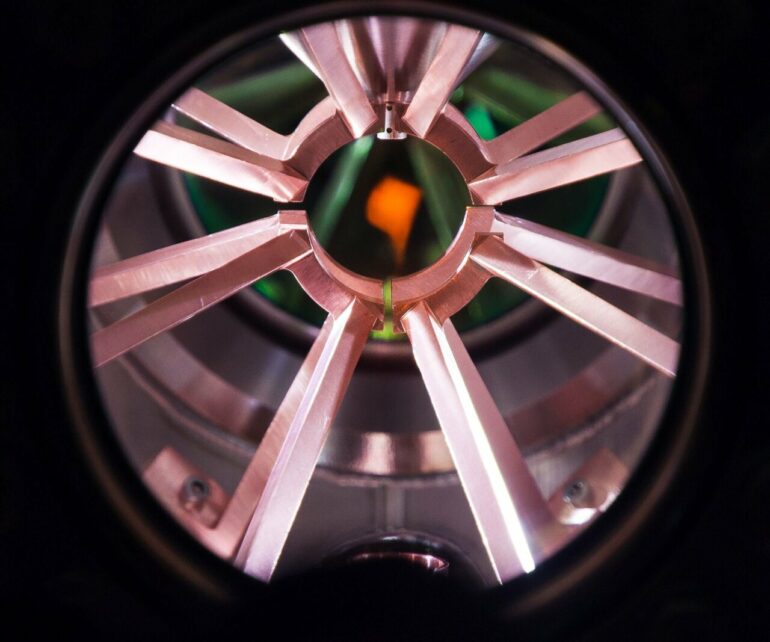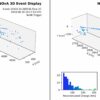The energy transport between atoms and molecules is the basis of all life. Such transport is based on interatomic forces known as the dipole-dipole interaction. Prof. Dr. Herwig Ott’s research group at Technische Universität Kaiserslautern (TUK) has now succeeded in reproducing such a transport mechanism in a disordered system. For this purpose, the researchers experimentally observed the quantum mechanical interaction between different Rydberg atoms. This allowed them to understand the influence of disorder on the distribution and mobility of the excitation energy between the atoms. The scientific journal Nature Communications has published the results.
The transport of energy between atoms and molecules is illustrated by photosynthesis, for example: When light arrives at a cell, its energy is first absorbed by a molecule and then transported between many other, disordered molecules. Once this energy package finally arrives at the so-called reaction center, it is permanently stored in the form of a chemical conversion.
To better understand such transport mechanisms, the research team chose a special experimental approach and advanced into the quantum regime: “In the process, we have overcome several technological challenges,” explains Carsten Lippe, lead author of the study. “This becomes clear just by looking at the necessary framework conditions: At an ambient pressure about 1000 times lower than in space around the ISS and at temperatures close to absolute zero, some atoms are excited by irradiation with lasers and put into a so-called Rydberg state. When an electron is in this state, placed in a distant orbit around the atomic nucleus, the atom is about 10000 times larger than in the normal state.”
This gigantic size makes an atom in the Rydberg state very sensitive to other such atoms and thus allows interactions between atoms to be studied experimentally that would otherwise take place on much smaller length scales.
As part of their experiment, the researchers have now used different laser systems to create two different types of Rydberg atoms in sequence and investigated the energy transport between them. In the process, they discovered quantum physical effects that contradict our everyday imagination. “You can think of such a transport process conventionally as a bouncing or hooping process. The energy or excitation jumps back and forth between the molecules. But in quantum physics it is different because of the so-called superposition principle: For example, the excitation can also hop to several molecules at the same time and thus be transported much more efficiently in the system. This is called coherent transport,” says Ott.
The researchers were able to demonstrate that the proportion of classical hopping and coherent transport can be adjusted in a controlled manner in the experiment. This is achieved by tiny modifications to the wavelength of the excitation lasers used. “Quantum physical effects are normally fragile and disappear as soon as disturbances are present, such as those caused by the atomic disorder in the gas in the present system,” says Thomas Niederprüm, who led the project together with Ott. “The observation of these effects in the study can help us to better understand other complex systems. The interaction between the Rydberg atoms can be transferred to other areas of current research, for example to the absorption and transport of light in molecules during photosynthesis. Recent studies have shown that quantum mechanical effects also play an important role in photosynthesis and that the energy transport takes place surprisingly loss-free despite the disorder.
The work on this study took place as part of the collaborative research center OSCAR (“Open System Control of Atomic and Photonic Matter”), in which both TUK and the University of Bonn are funded by the German Research Foundation. The results of the measurements and simulations as well as a description of the experimental setup have been published in Nature Communications.
More information:
Carsten Lippe et al, Experimental realization of a 3D random hopping model, Nature Communications (2021). DOI: 10.1038/s41467-021-27243-2
Provided by
Technische Universität Kaiserslautern
Citation:
Decoding mechanisms of atomic energy transport in the world of quantum physics (2022, February 10)



